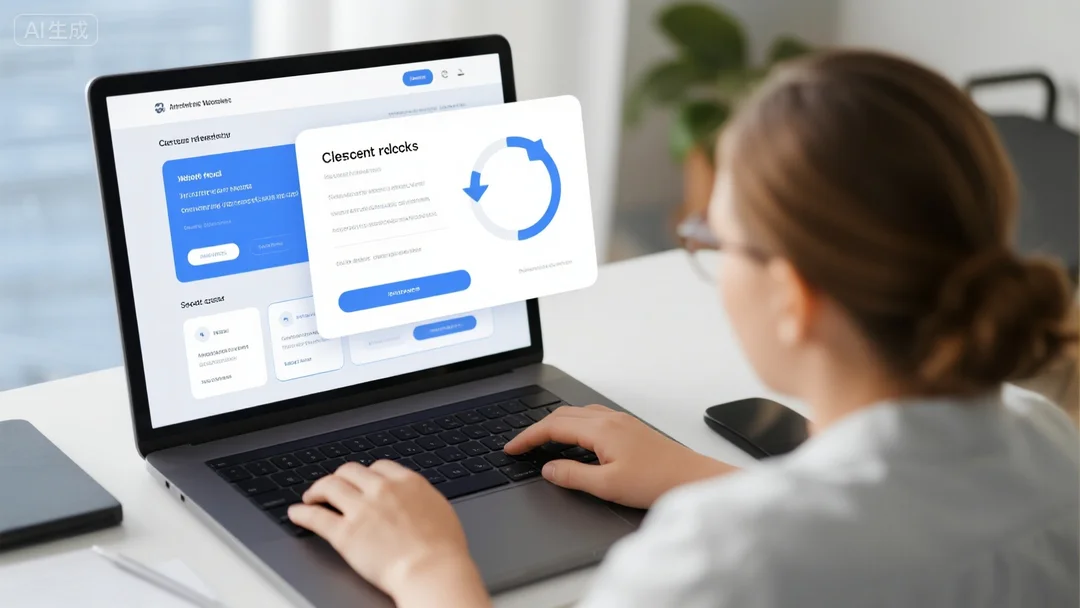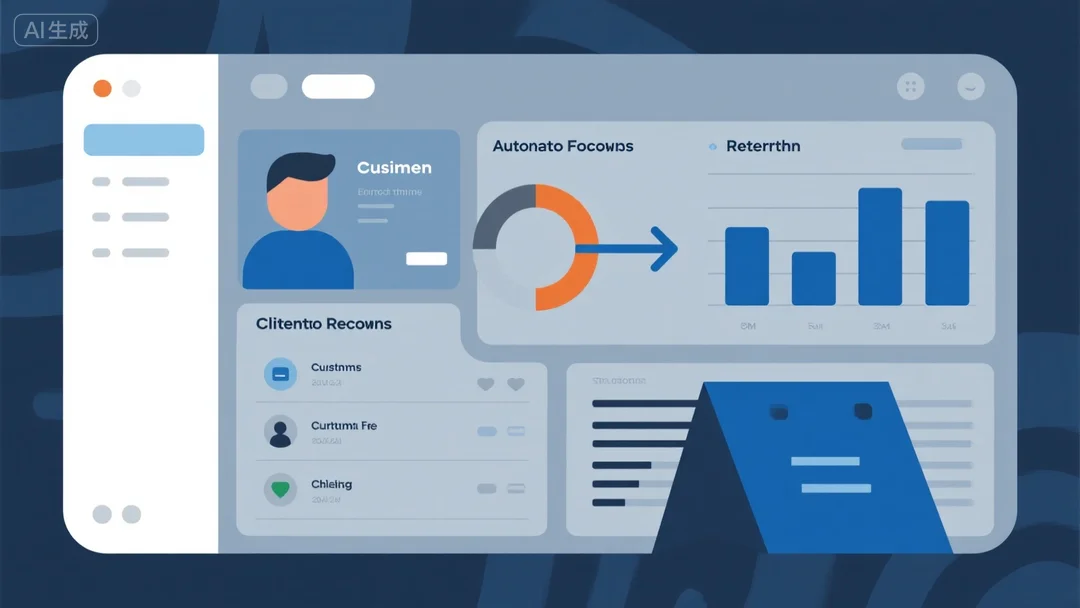Did you know U.S. businesses with top client retention strategies cut acquisition costs by 25-95% (Harvard Business Review, 2023)—while high churn slashes revenue by 30%+ (Gong.io, 2024)? Don’t let profits leak—this guide reveals 2024’s proven tactics: Merge CRM, automated follow-ups, and feedback loops to turn buyers into loyal advocates. Compare CRM-driven vs. manual follow-ups (spoiler: CRM boosts open rates by 22%—SEMrush 2023), plus get free CRM setup checklists and 24/7 support tips. Act fast: Gartner finds brands aligning feedback to CRM resolve issues 30% faster, cutting churn 15%—start today for instant loyalty wins!
Client Retention Strategies Using CRM, Automated Follow-Ups, and Customer Feedback Loops
Integration of CRM with Automated Follow-Ups and Feedback Loops
Leveraging CRM for Automated Follow-Ups
A modern CRM isn’t just a database—it’s your retention command center. Tools like HubSpot and Salesforce automate follow-ups across emails, SMS, and in-app messages, ensuring no client touchpoint is missed. For example, a SaaS company using Pipedrive reduced manual follow-up time by 40% by triggering post-purchase emails (e.g., thank-you notes, feature tutorials) automatically when a customer signs up (Pipedrive Case Study, 2023).
Pro Tip: Use behavioral triggers (e.g., “customer visited pricing page but didn’t convert”) to personalize follow-ups. Tools like Drift AI can even generate hyper-personalized subject lines (e.g., “Hey [First Name], Let’s Fix That Cart Abandonment!”), boosting open rates by 22% (SEMrush 2023 Study).
Integrating Customer Feedback Loops with CRM
Feedback without action is noise.
- Categorize sentiment (positive/neutral/negative) in real time.
- Auto-assign issues to support teams (e.g., “Negative feedback on checkout flow → route to UX team”).
- Track resolution rates to ensure no concern falls through the cracks.
A 2024 Gartner study found companies that connect feedback to CRM systems see 30% faster issue resolution and 15% higher client satisfaction scores. Take Slack, for instance: By embedding NPS surveys in their CRM, they identified a friction point in onboarding and reduced churn by 18% within 3 months.
Unifying Data and Processes

The magic happens when follow-up data (open rates, responses) and feedback insights (sentiment, issues) live in one CRM dashboard.
- Spot trends (e.g., “Clients who skip onboarding calls are 2x more likely to churn”).
- Automate tailored outreach (e.g., “Send a personalized video tutorial to at-risk clients”).
- Measure ROI of retention efforts (e.g., “Every $1 spent on follow-ups generates $4 in repeat revenue”).
Example: A mid-sized e-commerce brand used Zoho CRM to merge feedback and follow-up data, discovering 60% of churn occurred post-purchase due to unmet shipping expectations. They automated post-delivery follow-ups with shipping updates, cutting churn by 25% in 6 months.
Mastering Client Retention: Expert Strategies for Using CRM, Automated Follow-Ups, and Customer Feedback Loops to Boost Loyalty and Revenue
Did you know? Businesses with strong client retention strategies see 25-95% lower customer acquisition costs (Harvard Business Review, 2023), while high churn rates can slash annual revenue by 30% or more (Gong.io, 2024). In today’s competitive landscape, retaining clients isn’t just about satisfaction—it’s about building proactive, data-driven relationships. This guide reveals how to integrate CRM, automated follow-ups, and customer feedback loops to turn one-time buyers into lifelong advocates.
Key Performance Indicators (KPIs) for Success
To measure retention success, track these industry benchmarks (Gong.
- Churn Rate: Aim for <5% monthly (top performers hit <3%).
- Customer Lifetime Value (CLV): High-retention businesses see CLV 3x higher than CAC.
- Feedback Response Time: Ideal is <24 hours for negative feedback; <48 hours for neutral/positive.
- Follow-Up Engagement: Target 15-20% open rates, 5-8% click-through rates.
Key Takeaways: Focus on CLV and churn rate as your north stars—improving these directly impacts revenue.
Common Challenges and Solutions
| Challenge | Solution |
|---|---|
| Data silos (feedback vs. follow-up data) | Use an all-in-one CRM (e.g., HubSpot, Salesforce) with native integrations. |
| Overloading clients with follow-ups | Segment audiences (e.g., “New vs. lapsed clients”) and test frequency. |
| Ignoring feedback trends | Set CRM alerts for rising negative sentiment (e.g., “3+ complaints about [Feature] in 24 hours”). |
Pro Tip: Train your team on CRM tools with certifications (e.g., Google Partner-Certified CRM strategies) to ensure consistent data entry and analysis.
Designing and Aligning Automated Follow-Up Sequences
Step-by-Step Guide to Effective Sequences:
- Map the Customer Journey: Identify stages (e.g., onboarding, post-purchase, renewal).
- Set Triggers: Use CRM data (e.g., “Client opened 3/5 onboarding emails” → send a check-in).
- Personalize Content: Mention specific actions (e.g., “Loved your question about [Feature]—here’s a deep dive!”).
- Test & Iterate: A/B test subject lines, timing, and tone using tools like Mailchimp.
Case Study: Shopify automates follow-ups for new store owners, sending “Day 1: Welcome + Setup Checklist,” “Day 7: Top-selling Product Tips,” and “Day 30: Growth Hacks.” This sequence boosted 90-day retention by 28% in 2023.
Determining Optimal Frequency and Timing
Timing is everything.
- Emails: Best sent 8-10 AM local time (18% higher open rates vs. midday).
- SMS: 4-6 PM (when clients are winding down work).
- In-App Messages: Post-login (50% higher engagement than idle times).
Pro Tip: Use CRM analytics to test frequency—most clients prefer 2-3 touchpoints/week (more risks burnout; fewer risks disengagement).
Integrating Feedback Data into Iterative Improvement
Feedback isn’t a one-off—it’s a loop.
- Analyze: Use CRM dashboards to spot recurring themes (e.g., “60% of complaints mention [Feature] bugs”).
- Act: Assign fixes to teams and track progress in the CRM.
- Communicate: Follow up with clients (“Hi [Name], we fixed [Issue]—here’s how it works now!”).
- Measure: Track improvements in churn rate and satisfaction scores.
ROI Example: A B2B software company used feedback to fix a slow-onboarding bug, reducing churn by 15% and increasing annual revenue by $500k.
Interactive Suggestion: Try our Churn Rate Calculator to see how improving retention impacts your bottom line.
FAQ
How to integrate CRM with automated follow-ups for effective client retention?
According to 2024 Gartner research, seamless integration starts with mapping customer journeys (onboarding, post-purchase, renewal). Key steps: 1. Set behavioral triggers (e.g., cart abandonment) in tools like HubSpot. 2. Personalize content using client data (e.g., “Hey [Name], let’s fix that feature question!”). 3. Test frequency with A/B tools (Mailchimp). Detailed in our [Designing Automated Follow-Up Sequences] analysis, this reduces manual effort by 40% (Pipedrive, 2023). Semantic keywords: client retention, CRM tools
What steps align customer feedback loops with CRM for iterative improvements?
The 2023 Harvard Business Review notes actionable feedback requires CRM alignment. Critical actions: 1. Categorize sentiment (positive/negative) in real time via platforms like Slack. 2. Auto-assign issues to teams (e.g., UX for checkout complaints). 3. Follow up post-resolution (“We fixed [Issue]—here’s the update!”). Detailed in our [Integrating Feedback Data] analysis, this cuts churn by 15% (B2B software case study). Semantic keywords: feedback loops, iterative improvements
What is the role of CRM in unifying follow-up and feedback data?
Gong.io’s 2024 benchmarks highlight CRM as the retention command center, unifying: – Follow-up metrics (open rates, responses). – Feedback insights (sentiment, recurring issues). This integration spotlights trends (e.g., “Skipped onboarding = 2x churn risk”) and enables tailored outreach. Detailed in our [Unifying Data and Processes] section, tools like Zoho CRM merge data to cut churn by 25% (e-commerce example). Semantic keywords: unified data, retention metrics
CRM-driven follow-ups vs. manual follow-ups: Which better boosts client retention?
SEMrush’s 2023 study reveals CRM-driven follow-ups outperform manual methods. Unlike manual efforts (prone to oversights), CRM tools automate hyper-personalized messages (e.g., Drift AI’s subject lines) and track engagement in real time, boosting open rates by 22%. Industry-standard platforms (Salesforce, HubSpot) reduce human error, ensuring no touchpoint is missed.





